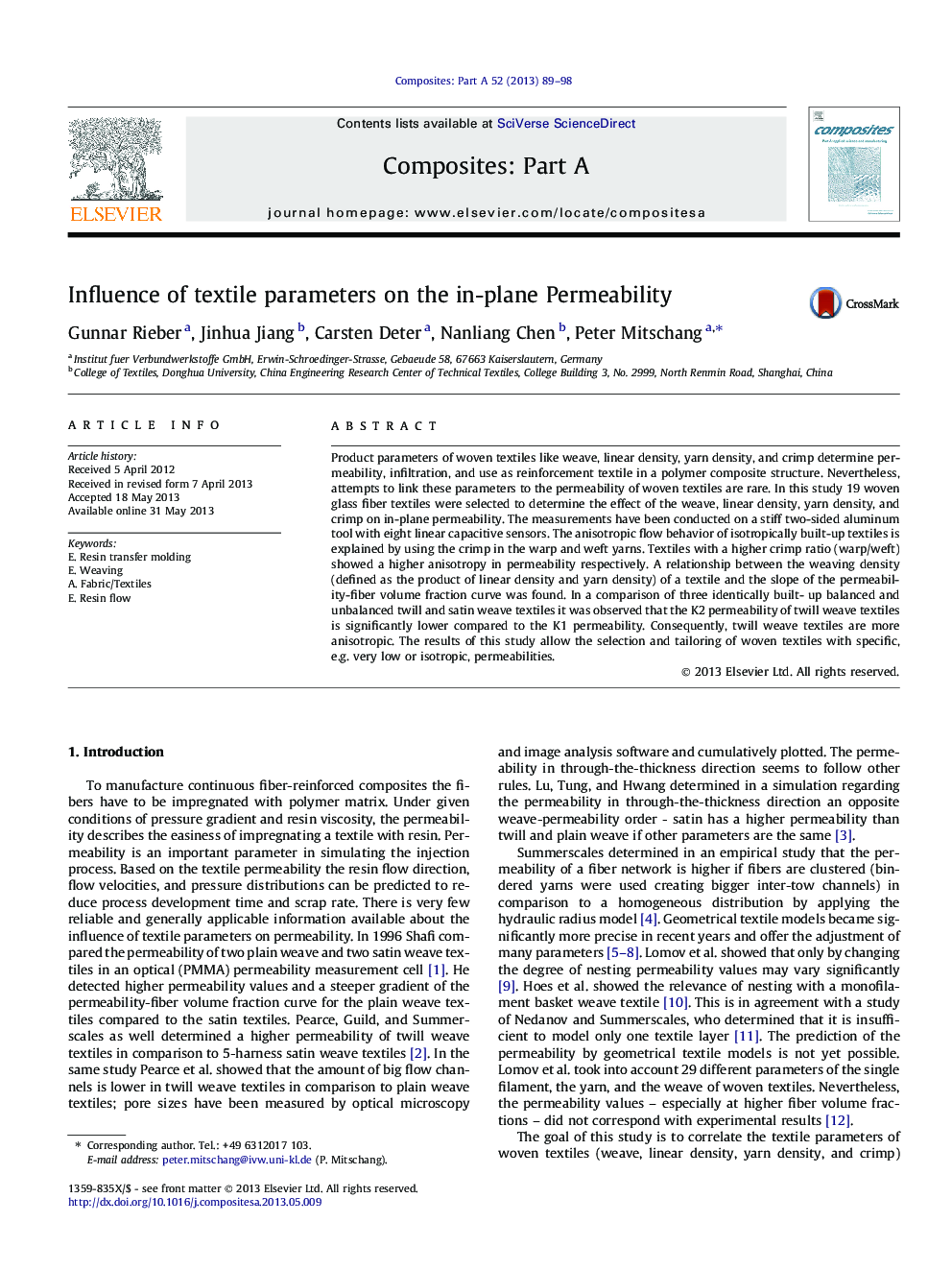| Article ID | Journal | Published Year | Pages | File Type |
|---|---|---|---|---|
| 7892616 | Composites Part A: Applied Science and Manufacturing | 2013 | 10 Pages |
Abstract
Product parameters of woven textiles like weave, linear density, yarn density, and crimp determine permeability, infiltration, and use as reinforcement textile in a polymer composite structure. Nevertheless, attempts to link these parameters to the permeability of woven textiles are rare. In this study 19 woven glass fiber textiles were selected to determine the effect of the weave, linear density, yarn density, and crimp on in-plane permeability. The measurements have been conducted on a stiff two-sided aluminum tool with eight linear capacitive sensors. The anisotropic flow behavior of isotropically built-up textiles is explained by using the crimp in the warp and weft yarns. Textiles with a higher crimp ratio (warp/weft) showed a higher anisotropy in permeability respectively. A relationship between the weaving density (defined as the product of linear density and yarn density) of a textile and the slope of the permeability-fiber volume fraction curve was found. In a comparison of three identically built- up balanced and unbalanced twill and satin weave textiles it was observed that the K2 permeability of twill weave textiles is significantly lower compared to the K1 permeability. Consequently, twill weave textiles are more anisotropic. The results of this study allow the selection and tailoring of woven textiles with specific, e.g. very low or isotropic, permeabilities.
Related Topics
Physical Sciences and Engineering
Materials Science
Ceramics and Composites
Authors
Gunnar Rieber, Jinhua Jiang, Carsten Deter, Nanliang Chen, Peter Mitschang,
